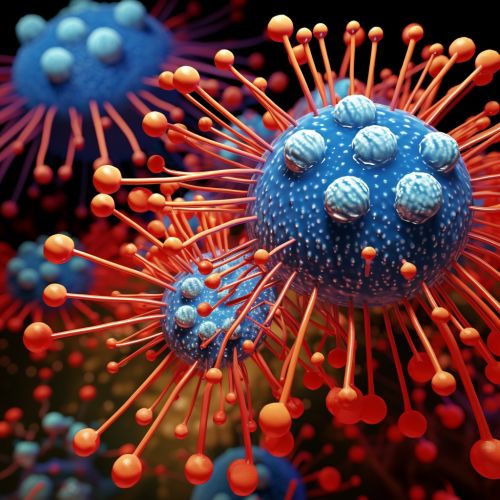Adrenergic receptor
Overview
The adrenergic receptor (AR) is a type of G protein-coupled receptor that is targeted by catecholamines, particularly norepinephrine (noradrenaline) and epinephrine (adrenaline). These receptors are integral to the sympathetic nervous system, a component of the autonomic nervous system, and play a crucial role in the fight or flight response.


Classification
Adrenergic receptors are classified into two main types: alpha (α) and beta (β) receptors. Each of these types is further divided into subtypes: α1, α2, and β1, β2, β3. These subtypes are characterized by their location in the body, their response to different drugs, and their physiological effects.
Alpha receptors
Alpha adrenergic receptors are primarily found in the smooth muscles of blood vessels, the gastrointestinal tract, the bladder, and the uterus. They are further divided into α1 and α2 receptors.
Alpha-1 receptors
Alpha-1 receptors (α1) are located on the postsynaptic effector cells. They are primarily responsible for smooth muscle contraction and are involved in various physiological processes such as vasoconstriction, pupil dilation, and intestinal relaxation.
Alpha-2 receptors
Alpha-2 receptors (α2) are found both pre and postsynaptically. They play a crucial role in regulating neurotransmitter release, particularly in the central nervous system. Activation of these receptors inhibits the release of norepinephrine, leading to a decrease in sympathetic activity.
Beta receptors
Beta adrenergic receptors are predominantly found in the heart, lungs, and adipose tissue. They are further divided into β1, β2, and β3 receptors.
Beta-1 receptors
Beta-1 receptors (β1) are primarily located in the heart and kidneys. They play a significant role in cardiac function, increasing heart rate and contractility.
Beta-2 receptors
Beta-2 receptors (β2) are found in the lungs, uterus, liver, and skeletal muscle. They are responsible for smooth muscle relaxation and play a crucial role in bronchodilation, uterine relaxation, and glycogenolysis.
Beta-3 receptors
Beta-3 receptors (β3) are primarily found in adipose tissue and play a key role in lipolysis and thermogenesis.
Function
Adrenergic receptors function by binding to catecholamines, which triggers a series of events within the cell. This process, known as signal transduction, involves the activation of a G protein, which in turn activates an effector enzyme. The effector enzyme then generates a second messenger, such as cyclic AMP (cAMP), which initiates a cascade of intracellular events leading to the physiological response.
Pharmacology
Adrenergic receptors are the target of various drugs used in the treatment of a wide range of conditions, including hypertension, asthma, and heart failure. Drugs that stimulate these receptors are known as agonists, while those that inhibit their activity are referred to as antagonists.
Agonists
Agonists are drugs that bind to and activate adrenergic receptors, mimicking the effects of the body's natural catecholamines. They are used in the treatment of various conditions, including asthma, cardiac arrest, and hypotension.
Antagonists
Antagonists are drugs that bind to adrenergic receptors but do not activate them. Instead, they block the receptors, preventing the natural catecholamines from binding. They are used in the treatment of conditions such as hypertension, angina, and arrhythmias.
